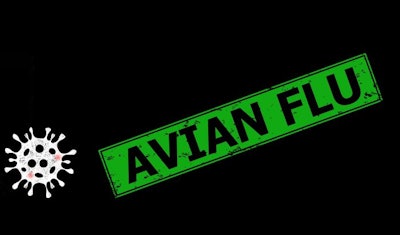
Development of new strategies to tackling future avian influenza (AI) outbreaks is the primary goal of a newly formed research group in the United Kingdom (U.K.)
According to the U.K. government, a consortium of eight members has received funding amounting to GBP1.5 million (US$1.8 million). Sources of this financial support are the Biotechnology and Biosciences Research Council (BBSRC) and the Department for Environment, Food and Rural Affairs (Defra).
Since the autumn/fall of 2021, the U.K. — along with other European countries — has experienced the most prolonged and extensive series of HPAI outbreaks in history.
Welcoming the announcement was the National Farmers Union (NFU).
“It’s good to see the government taking a positive step to help the industry tackle the disease in the future,” said NFU Poultry Board Chair James Mottershead. “AI has been devastating for so many poultry farmers across the country, causing great distress emotionally, mentally and financially for farming families. We want to work with the government to minimize the impacts of any future AI outbreaks so we do not experience another year like this one.”
He expressed the hope that the research will add to the understanding about the disease, and how poultry owners can better protect their flocks.
Among the specific areas of investigation for the new group are to establish greater understanding of current virus strains, and how they are transmitted from wild birds to poultry, and between individual birds. Furthermore, the scientists will look at why some bird species are more resistant to the virus. So that the evolution and spread of viruses can be better predicted in future, the group will develop infection models.
Last but not least, the group will examine risk mitigation measures. By reducing the disease burden in poultry, there is less chance of the virus being transmitted to people, possibly causing a future pandemic in the human population.
On a regular basis, consortium members will participate in multinational sessions hosted by the U.S. Department of Agriculture. At these meetings, they will have the opportunity to influence future global research on animal influenza.
Sharp dip in new avian flu outbreaks among European poultry
As of June 18, 1,764 HPAI outbreaks had been registered across Europe so far in 2022. This is according to the latest update of the Animal Disease Information System by the European Commission (EC).
To date, one or more outbreaks have occurred in 20 European countries over this period.
This year’s outbreak figure has just overtaken the total of 1,756 outbreaks registered with the EC by 24 European states throughout 2021.
However, this latest total for 2022 has increased by just four since the previous EC update on June 10. All the latest outbreaks were in the Netherlands, bringing that nation’s total for the year to 41.
Recording by far the most outbreaks in 2022 is France, with 1,341. According to French agriculture ministry, no new cases had been detected in the nation’s poultry flocks since May 17.
After France, Hungary has registered the most outbreaks with the EC (206), followed by the Netherlands (41), and Poland and Spain, each with 31 outbreaks for the year so far.
Earlier this month, Poland officially declared the country free of HPAI to the World Organisation for Animal (WOAH). Since November of last year, authorities there have registered 94 HPAI outbreaks in poultry with this agency. Directly impacted were more than 3.65 million poultry.
Of these, 30 outbreaks occurred this year, according to the chief veterinary office, most recently at the end of April. In almost all cases, the H5N1 HPAI virus serotype was detected, but at one location, birds tested positive for the H5N2 variant.
Three nations register new cases in poultry
In mid-June, the Dutch agriculture ministry reported the country’s most recent outbreaks. Affected were almost 165,000 broilers in the north of the Netherlands in Friesland, and around 55,000 organic laying hens in the central province of Flevoland.
Not covered by the EC notification system are Russia and the U.K. (outside Northern Ireland).
In the Ryazan region of Russia, two more backyard flocks tested positive for HPAI earlier this month. Based on WOAH reports, these bring to four the region’s total outbreaks since May 26. All of the outbreaks in this region of Russia’s Central federal district have been in flocks described as “backyards.”
In the U.K., one further outbreak brings the season’s total in England to 102, according to the agriculture department, Defra. Like the immediately preceding outbreak, latest cases were detected in the southern county of East Sussex.
Further HPAI cases among European wild birds
For the year to date, HPAI outbreaks in wild birds across Europe reported to the EC notification system have reached 1,902 (as of June 18). A total of 31 countries in the region have registered at least one outbreak in wild species through this system.
For comparison, 2,437 HPAI outbreaks in wild birds were registered with the EC’s system — also by 31 European states — during the whole of 2021.
Compared to the EC’s previous report on June 10, a further 47 outbreaks in wild species have been reported to the EC by eight countries. Of these, 23 were in the Netherlands, with others in Belgium, Denmark, France, Germany, Norway, Spain, and Sweden.
Furthermore, the veterinary authorities of four other countries have registered new cases in wild birds with WOAH over the past week. These were Finland, Iceland, Poland and the U.K.
Continued presence of HPAI viruses across Europe even in early summer supports the urgent need for a better understanding of avian influenza viruses. The continent’s poultry sector would struggle to bear another season of devastating poultry and financial losses from HPAI over the coming winter. Furthermore, mass mortalities from the disease threaten the future of some wild bird populations.
View our continuing coverage of the global avian influenza situation.














